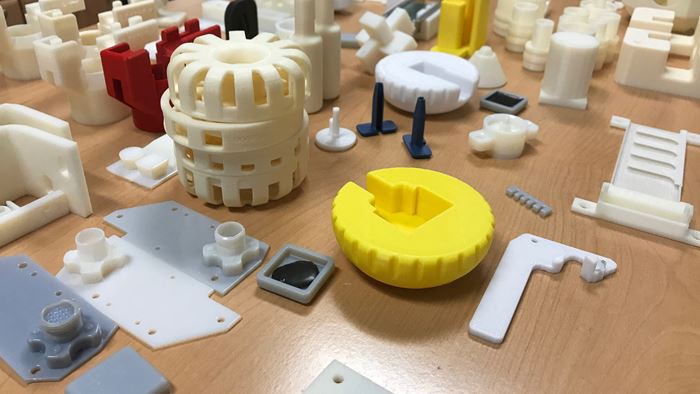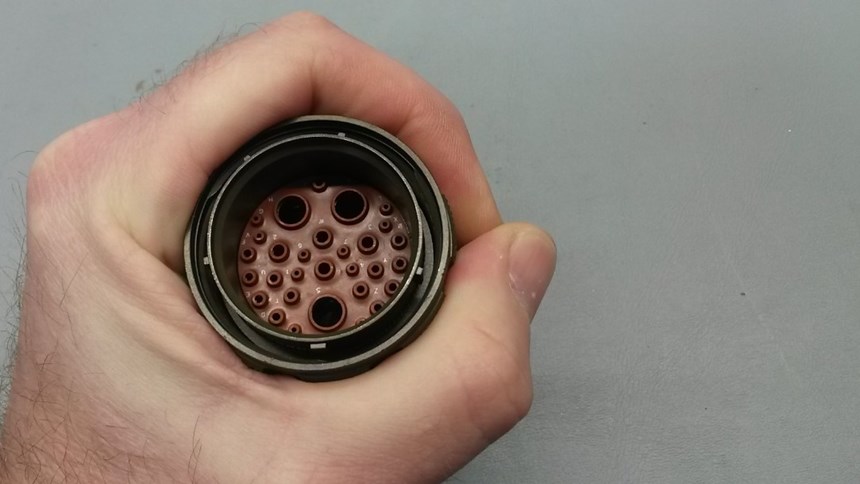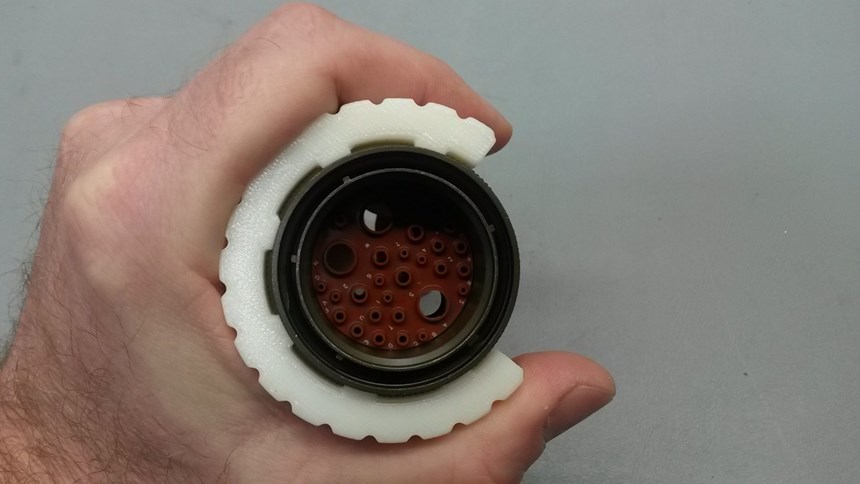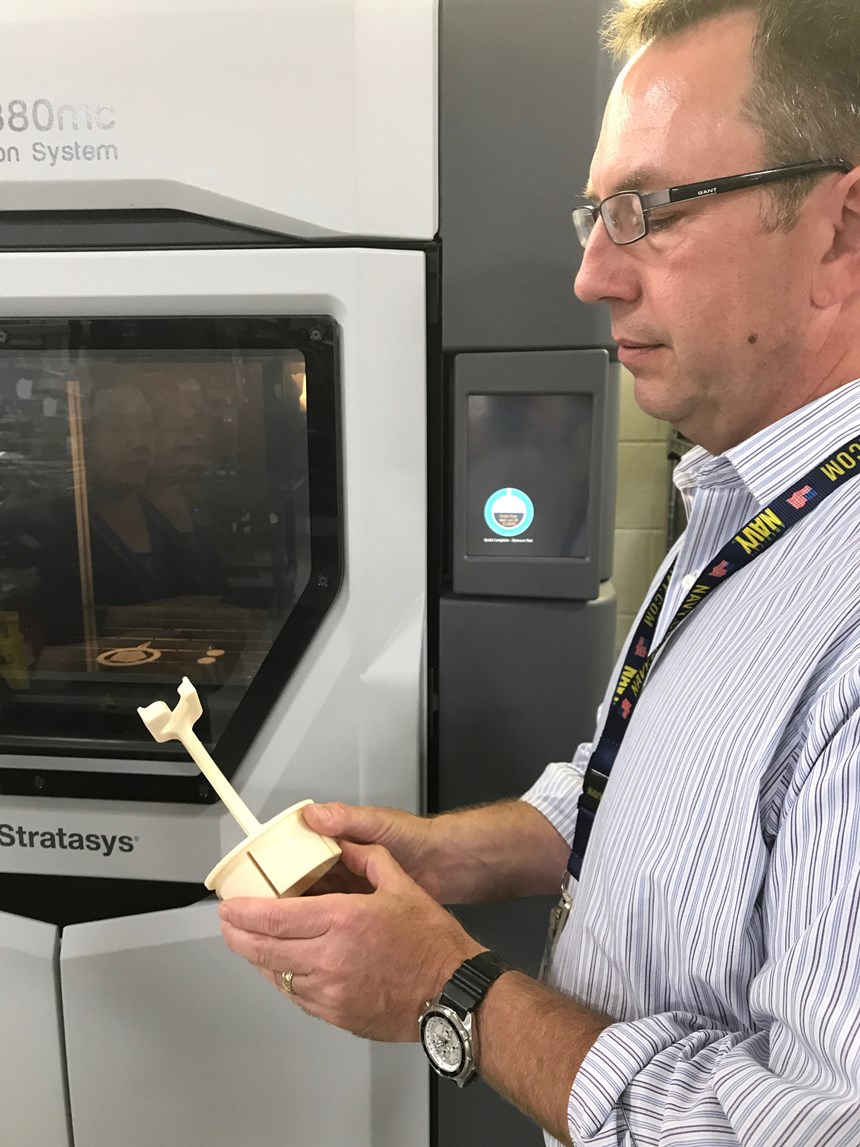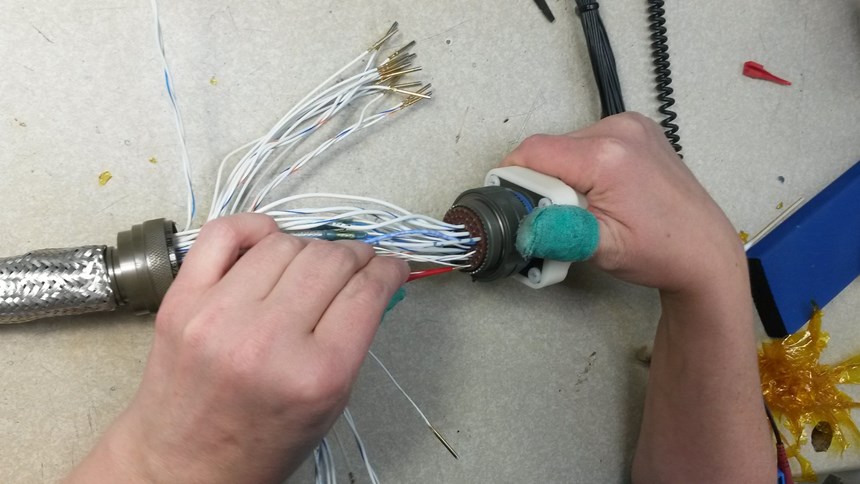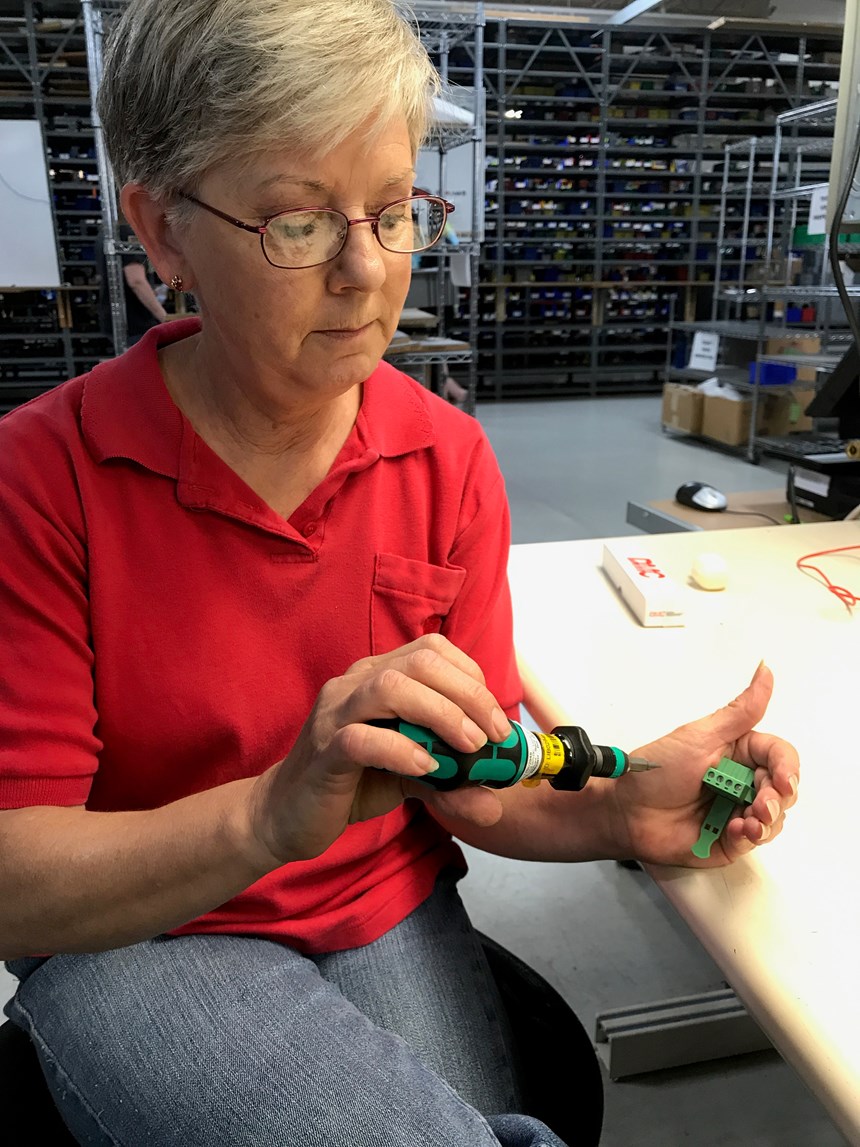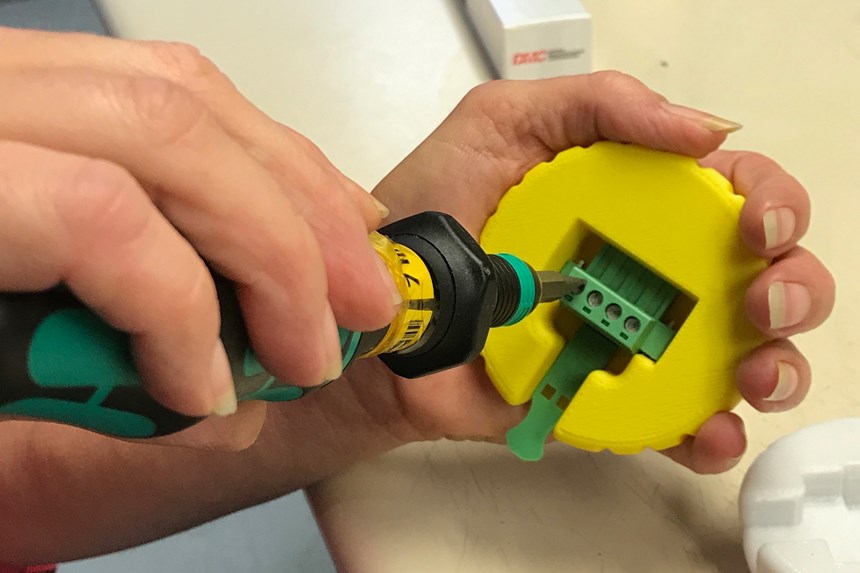The pain was severe enough by 2010 that Sarah Wheeler finally saw a doctor. By that time Wheeler had been working as an electrical assembler at Liberty Electronics for nearly three years, carefully bending resistors for small electrical circuits, piecing together harnesses and cable assemblies, and performing other detailed assembly line tasks. The work was meticulous and repetitive, but Wheeler had formed strong bonds with her coworkers at this high-end wire and layout facility, located just outside of picturesque Franklin, Pennsylvania.
The diagnosis from Wheeler’s doctor was unexpected and devastating: Wheeler, at only 38 years old, had rheumatoid arthritis—an incurable and often-misunderstood autoimmune disorder in which one’s own immune system attacks not only the body’s joints and cartilage, but sometimes the skin, heart, eyes, lungs and blood vessels. For Wheeler, the disease had manifested primarily in her hands and feet, slowly disfiguring the joints and sending electric waves of pain each time she’d grip a tool or crimp a wire. “It was a devastating feeling,” she recalls. “The pain was really, really bad, but add to that the stress of thinking that I might not be able to work anymore...I’ve worked since I’ve been old enough to hold a job, and not working was not an option for me.”
It was around the time of Wheeler’s diagnosis that Liberty’s project engineer, George Allman, along with the company’s owners and senior management, first began kicking around the idea of adding a new technology to Liberty’s arsenal. (Allman is his real name, but to protect privacy, the names of employees dealing with medical issues have been changed.) The assembly work at the 150,000-square-foot facility often required custom tools and jigs, all of which had to be conventionally manufactured with wood or metal. By 3D-printing these parts, the group hoped, Liberty might be able to save time and money. The company finally purchased and installed its first printer, a Stratasys uPrint SE, in 2013.
Liberty’s first additively manufactured products were typical for an operation just beginning to utilize the technology. The company prototyped parts for a handful of clients and printed simple fixtures, jigs and holders that could be put to use at various stations along the assembly line. After a few months online, the printer was meeting everyone’s modest expectations—saving time and money for both the company and its clients.
But those expectations were surpassed quickly in ways that no one had imagined. A novel use of additive manufacturing was about to be discovered at Liberty Electronics—one that would benefit not only the company’s bottom line, but also inspire and aid many of its 350-plus employees.
It all started the day Wheeler confided in Allman about her struggles. She’d been diagnosed with rheumatoid arthritis, she said, and all of the gripping, bending and torqueing she had to do on the assembly lines was becoming more painful by the day. She worried she might not last long at the company.
“I’ve noticed all of the tools that you’ve created for the lines,” she told the engineer.
“Can you make something for me?”
Career Opportunities
Liberty Electronics is a contract manufacturing shop that produces high-end assemblies, primarily for the military and aerospace industries. There are different terminologies used to describe companies like Liberty: wire shops, harness shops, assembly houses, wire and layout facilities. You won’t see a missile system or an aircraft on Liberty’s shop floor, but you will see dozens of employees assembling and testing wired components for them. Most of Liberty’s completed assemblies become integrated with other subassemblies before being installed into a final product. From electrical wiring harnesses, to box-builds, to electromechanical products, the name of the game at Liberty is low volume, high value and high quality.
When the opportunity arose to implement additive manufacturing at the shop, management at the company weighed the initial capital expense against promises of the technology. Additive manufacturing is awash with tales of high-tech efficiency—saved money, or time, or both—and it was this potential that initially guided the engineers at Liberty. Custom 3D-printed prototypes were delivered to customers in a manner of hours rather than weeks. Customer-supplied models were printed, and if the models contained flaws, those flaws were discovered almost immediately. These kinds of stories are grist for the mill within AM, and for good reason.
But when Wheeler confided in Allman about her struggles with rheumatoid arthritis, she did so in a way that appealed not only to Allman’s heart, but also to the engineer’s analytical mind. Wheeler was struggling with a common military spec connector casually known as a 38-triple-9, or a D38999. (See Figure 2.) Piecing together this expensive aerospace connector assembly requires a firm grip in the palm of one hand, while the other hand applies torque and pressure to the wires that extend from the opposite end of the device.
Allman took measurements of both the device and Wheeler’s hand and returned to his desk. Using the CAD software platform SolidWorks, he began drawing a prototype adapter that increased the circumference on the gripping end of the D38999 while also locking it into place. Within three hours after their conversation, Allman had printed a custom tool for Wheeler. (See Figures 3 and 4.)
She was ecstatic.
“It was wonderful,” she says. “When he brought that first tool out to me, that was a great day. It saved a lot of time with all of the work I have to do on that connector, but it was more than that. It was knowing that even if I get worse, there are still things that can be done to help me continue to do my job. Knowing that they are willing to make adaptations for me is just an amazing feeling.”
It didn’t take long before word of Wheeler’s custom fixture began to spread on the shop floor. Repetitive, precise actions that involve high degrees of force are routine on the assembly floor, and Allman began fielding more and more requests for 3D-printed parts. As the number of line operators using these custom tools at Liberty Electronics increased, so followed the tangible and intangible benefits to both the workers and to Liberty’s bottom line.
A cost savings analysis put together by Allman for management revealed numbers that were hard to believe. Minimum reduction in process time for a task: 50 to 65 percent. Increase in productivity for workers using these tools: up to 300 percent. Cost savings of printing the custom part versus outsourcing it for conventional tooling: 80 to 85 percent. Then there was the improved morale and increased scopes of work to consider. Higher employee retention. Increased precision and accuracy. It was determined that the uPrint SE paid for itself within the first four months of use.
Following this success, management agreed to invest in a Stratasys Fortus 380 and an Objet30 Prime—larger, higher-capacity machines with greater material capacities. Liberty continued to utilize additive manufacturing for clients’ prototypes, “but there was a different side to it,” Allman says. “I talk to other engineers in similar industries, and they have 3D printers that are printing cool parts for aerospace and prototypes and so on, and we do things like that as well. That’s great, but in a way, it’s almost traditional. I see a bigger impact for our production floor from an efficiency standpoint. If we want to make more money as a company and be more successful, we want to improve efficiencies and retain employees. We want to make accommodations. The machine doesn’t care what it’s making, but we do. We want to put something into it that will help somebody out.”
The Iceberg Theory
A long-term study by The Job Accommodation Network (known as JAN, a service of the U.S. Department of Labor’s Office of Disability Employment Policy), shows that workplace accommodations such as Liberty’s are deeply impactful across the entire workplace. The study results were consistent across variables that measured both direct and indirect benefits, and it backed up Allman’s analysis showing that the benefits Liberty received from its custom accommodations far outweighed its investments in additive technologies. “Employers reported that providing accommodations resulted in such benefits as retaining valuable employees, improving productivity and morale, reducing workers’ compensation and training costs, and improving company diversity,” it says.
Mary Fletcher had been working at Liberty for a few months when she began to experience physical difficulties and the occasional on-the-job injury. One of Fletcher’s typical assignments as an inspector involves a torque verification that requires her to apply five pounds of torque to each clamping position of a small electrical connector.
The component is small yet contains numerous fasteners that require a precise and confirmed level of torque. Fletcher says that each time she’d turn the screwdriver, she was just waiting for the tip to slip off and pierce her hand.
“I did maybe 12 to 20 a day,” Fletcher says as she shows me the original tool. (See Figure 5.) The handles are small and narrow. “See how scrunched up my hand is? When you’re applying five pounds of torque to make it turn, the connector digs into your palm, or worse, the screwdriver slips and the tip pierces me. So I did everything a lot slower because I was afraid I was going to get hurt.”
Fletcher talked to Allman, who came up with an idea.
Allman asked Fletcher to grip a golf ball, a racquetball and a baseball, and tell him which felt the most comfortable in her hand. He took measurements of the tool as well as Fletcher’s palms and, based on the feedback, began drafting a custom piece in SolidWorks. The result is a 3D-printed adapter about the size and shape of a small hockey puck (see Figure 6). When gripped, it covers most of Fletcher’s palm, allowing her to hold the connector handle without it digging into her palm. Allman printed a few different iterations of the piece, all of which hold different sized connectors that not only lock the tool in place, but also protect the rest of Fletcher’s palm from the tip of the screwdriver.
“They’re wonderful,” Fletcher says. “It sped up the entire process. I probably still have scars in my hand from before I had this. I’m a girly-girl. I don’t have tough hands. When you’re applying that much pressure to make it turn and it slips into your hand, it can feel like a nail. Now I’m more confident about doing my job, and I’m doing it better and getting more accurate readings. It’s a simple tool but it’s made a profound difference.”
A number of studies from organizations such as OSHA and the International Labor Association have examined the indirect costs of workplace injuries. Perhaps the most famous example (and one that is not without controversy), is casually referred to as “The Iceberg Study.” Created by F.E. Bird in 1974, avisual representation, which resembles an iceberg, depicts its tip as the direct, upfront cost of a workplace injury. These would be the worker’s compensation premium, fees and the deductible. Indirect or uninsured costs, which Bird depicts below the surface, can represent many times over the direct or upfront costs. These include lost production from the worker and coworkers who have to fill in, interruption of operations, disruption to the team, cost of training another worker to temporarily fill the position, damage to equipment, and any legal costs or penalties resulting from the injury.
These considerations weren’t lost on Allman or senior management at Liberty. “An injury costs so much,” Allman says, “but you don’t see the underlying costs. If an operator injures herself and it costs $700 to go to the hospital, there’s lost productivity, lost time, overtime, etc. So that $700 injury is all of the sudden a $10,000 injury.”
But what about employees who physically could not perform their job without these accommodations? From an employer’s perspective, can you quantify the upfront costs? Is a cost analysis even a fair measurement of their worth?
Ask Karen Graham.
Empathy In Engineering
Karen Graham is a 56-year-old production assembler at Liberty Electronics whose work often involves prepping electrical connectors. To do so, she removes the insulation from the end of a wire, crimps its end, and inserts it into a circular or rectangular connector. It’s work that requires a level of precision that, in Graham’s case, is made much more difficult because of her right hand, which never fully formed. She could perform the task, but it was an arduous, slow process.
“It was very frustrating because I didn’t feel like I was getting anything accomplished,” Graham says. “Everybody else could grip onto it and adapt and screw it together. But I wasn’t performing the job efficiently. It got to the point where I’d say I can’t do that job because I can’t hold the connector; it would be easier if someone else did it. So I went to my supervisor, who had bragged about how George had helped her out with a problem.”
“Karen hunted me down and grabbed me by the lapels,” Allman jokes.
Allman and Graham discussed her situation. Allman asked her to show him the most comfortable position of her hand. He took measurements of her smaller hand, drew up a design in SolidWorks, and 3D-printed a piece that resembles a simple sleeve. Karen Graham inserts her hand into the sleeve (see Figure 7), the surface of which includes a fixed post that can engage with an adapter or a wrench. Today, Graham uses the custom piece daily.
“I’m 56 years old,” Graham says. “I left my previous job after 14 years to work for this company. I had just heard that they treated their employees well and the atmosphere was better. I was talking with a friend the other day who was saying that, at her age, she would never want to change jobs. She said, ‘Who would want me? At my age people usually have arthritis or other issues.’ And I said, ‘Well, I’m 56 and not that far from retiring, and I left a job and came here and it was the best move I ever made.’ George understood. I don’t know how he does it, but he knew what he could do in the machine and what I needed. Here, I’m considered a person.”
“I have been in this industry for years,” Allman says, “and I can understand the job that our employees are trying to accomplish, whether it’s loading a connector or stripping wires or cables. When an employee needs an accommodation, it’s a matter of walking through a conversation. Is this going to be comfortable for you? Uncomfortable? Is it too large or too small? Just getting some organic input as far as what feels right and what works—that’s the engineer side kicking in to the creative.”
Allman calls this process “empathy in engineering.” And indeed, that intangible, hard-to-quantify process of making an accommodation for an employee—with or without a disability—is a big part of what drives this commitment from Liberty’s leadership. But the direct benefits of what the company is doing for its employees through additive manufacturing are undeniable. Liberty has remarkably low turnover among its assemblers and operators. They’re more productive, more precise and create higher quality work with increased speed. Morale is high, and there is an emotional connection between the assemblers and the engineers.
“All of a sudden, people are talking with engineers a bit differently than they did before,” Allman says. “The thing that Sarah Wheeler brought to our attention is that, although we are always trying to engineer an accommodation at the production level, 3D printing allows us to make these accommodations very personal. Sometimes I’ll be prototyping a high-end commercial part for an aircraft, and the value of that is measured differently than creating a custom tool that makes someone’s life better. I want to encourage engineers that they can make anything. I think Sarah gave us an awakening.”
Read Next
Alquist 3D Looks Toward a Carbon-Sequestering Future with 3D Printed Infrastructure
The Colorado startup aims to reduce the carbon footprint of new buildings, homes and city infrastructure with robotic 3D printing and a specialized geopolymer material.
Read MorePostprocessing Steps and Costs for Metal 3D Printing
When your metal part is done 3D printing, you just pull it out of the machine and start using it, right? Not exactly.
Read MoreProfilometry-Based Indentation Plastometry (PIP) as an Alternative to Standard Tensile Testing
UK-based Plastometrex offers a benchtop testing device utilizing PIP to quickly and easily analyze the yield strength, tensile strength and uniform elongation of samples and even printed parts. The solution is particularly useful for additive manufacturing.
Read More


